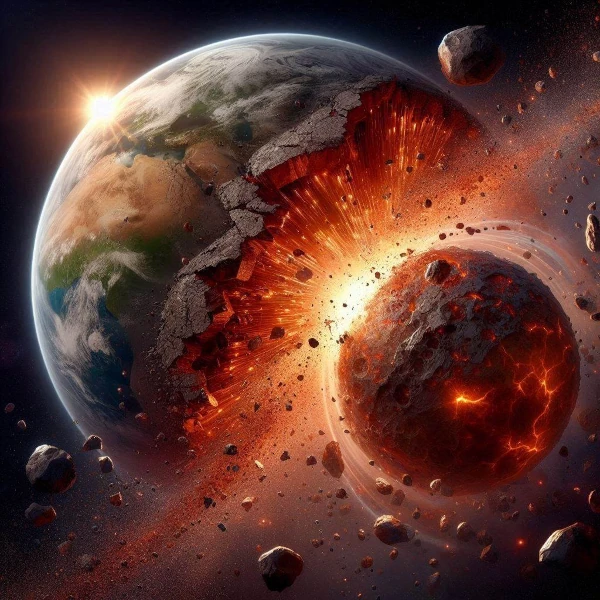
Image description: Illustration of the giant impact that is thought to have given birth to the Moon billions of years ago.
The Moon, which we see in the sky almost every night, wasn’t always there. So, how did it appear? Scientists believe it formed around 4.5 billion years ago after a spectacular event.
A long time ago, shortly after Earth was born, a giant planet the size of Mars, called Theia, collided with Earth. This massive impact threw huge amounts of rock and debris into space. These pieces of rock were made of material from both Earth and Theia.
After the collision, all the debris started to orbit around Earth, like a ring. Little by little, thanks to gravity, these pieces began to clump together to form a giant ball: this was the beginning of the Moon.
Once the Moon was formed, it was much closer to Earth than it is today. Over time, it has moved farther away, and it continues to drift by a few centimeters each year. The Moon is now our constant companion in space.
The Moon plays a very important role for Earth. It affects the ocean tides and helps stabilize the Earth's rotation, making our climate more stable. Without the Moon, Earth would be a very different place!
The Moon was born from a giant collision between Earth and another planet billions of years ago. Since then, it has accompanied us and helped keep our planet stable and livable. The next time you see the Moon shining in the sky, remember its incredible story!